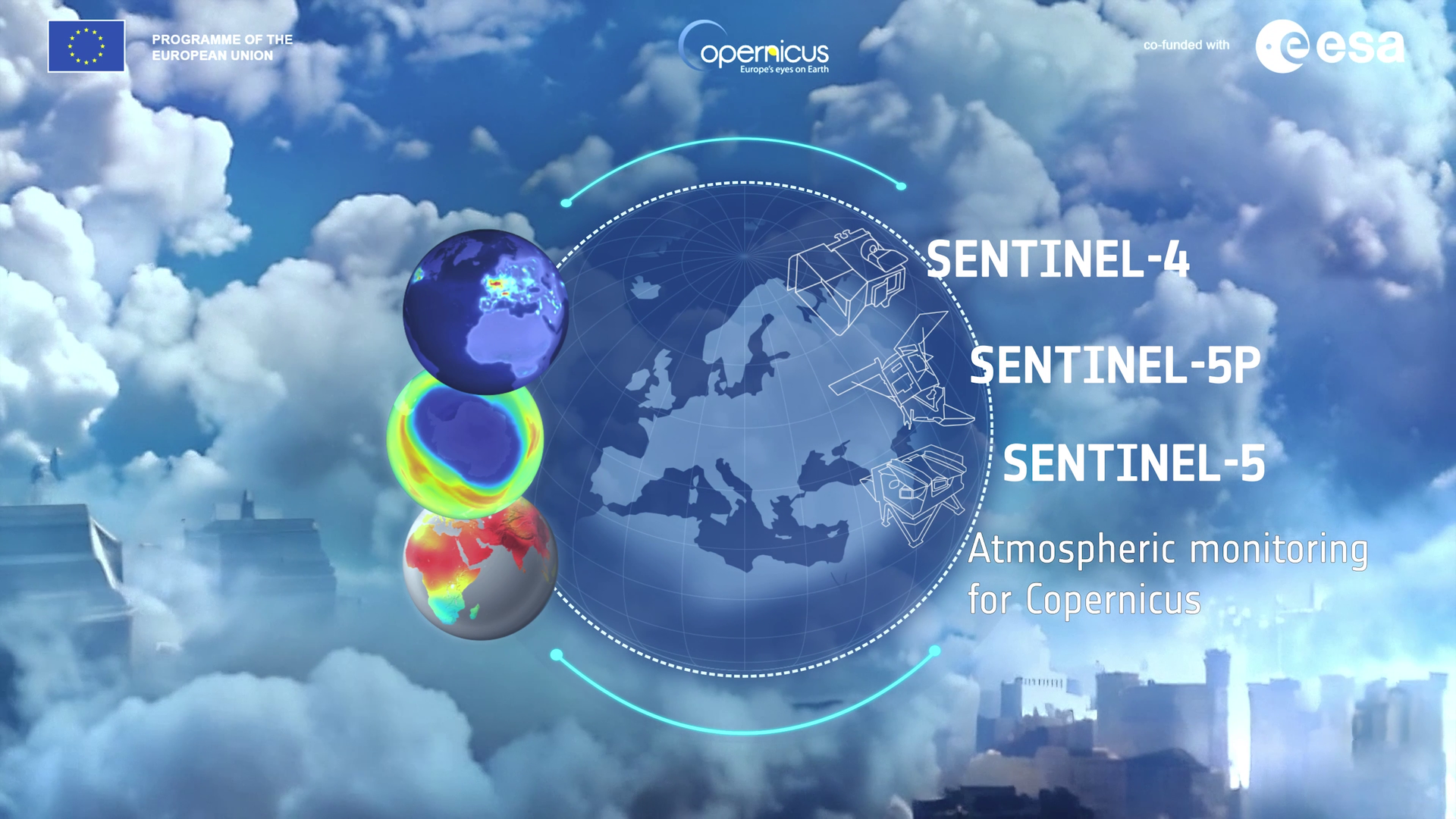Air-quality mission ready to join its host weather satellite
Following months of meticulous testing to ensure that it will deliver first-class data on air quality around the world, the new Copernicus Sentinel-5 instrument has been delivered to Airbus in France ready to be installed on the first MetOp Second Generation weather satellite.
While not a satellite in the traditional sense, Sentinel-5 is a Copernicus mission that will be carried on the MetOp Second Generation A-type weather satellites, the first of which is expected to be launched in 2025.

The purpose of the Sentinel-5 mission is to measure the distribution of atmospheric trace gases such as ozone, nitrogen dioxide, sulphur dioxide, formaldehyde, glyoxal, carbon monoxide, and methane, as well as aerosols.
These gases can not only affect the air we breathe, but also our climate.
In fact, Sentinel-5 follows on from the highly successful Sentinel-5 Precursor satellite, that has delivered a wealth of information on air-quality since it was launched in 2017.
With the MetOp Second Generation satellites designed to orbit around Earth at a relatively low altitude, complementing the Meteosat Third Generation Sounder satellites that will carry Sentinel-4 in high geostationary orbit, Sentinel-5, with its 2700 km-wide swath, will offer full global coverage every day.
To accomplish its mission, the Sentinel-5 instrument incorporates five optical spectrometers that analyse the solar light reflected by the Earth. The wide spectral range, extending from the ultraviolet to the shortwave infrared, enables a wide range of different gases to be detected and measured.

The instrument also boasts very fine spatial resolution, typically 7.5 km, which is key for monitoring air quality over major cities and to pinpoint emission sources.
Now that the Sentinel-5 instrument has been safely shipped from the Rutherford Appleton Laboratory in the UK, where it was calibrated and tested, to Airbus in Toulouse, engineers will set about installing and testing it on its host MetOp Second Generation-A1 satellite – a task that will take around one month.
Didier Martin, ESA’s Sentinel-5 Project Manager, said, “We are thrilled to have passed this important milestone which is a significant step forward to realising the mission and its important task delivery key data for air-quality forecasts, climate monitoring and more.
“We would like to thank all the teams involved for all their hard work. We now look forward to seeing Sentinel-5 installed on the MetOp Second Generation-A1 satellite by Airbus in Toulouse.

“Airbus in Germany has led the consortium, which includes more than 45 companies from 13 European countries, in the development and build of this Copernicus mission.”
Once launched into Sun-synchronous orbit aboard MetOp-SG-A1, the satellite and the Sentinel-5 instrument will be operated by the European Organisation for the Exploitation of Meteorological Satellites, Eumetsat, in Germany, who will also be responsible for data acquisition, processing and distribution to users.
The Copernicus Atmosphere Monitoring Service and the Copernicus Climate Change Service will use Sentinel-5 data for their information services that support environmental agencies in monitoring climate and air quality, and help authorities in related decision-making.
Since the data will be free and open, as is the case for all Copernicus missions, the scientific community and the general public worldwide will equally benefit from Sentinel-5.


Access the video














 Germany
Germany
 Austria
Austria
 Belgium
Belgium
 Denmark
Denmark
 Spain
Spain
 Estonia
Estonia
 Finland
Finland
 France
France
 Greece
Greece
 Hungary
Hungary
 Ireland
Ireland
 Italy
Italy
 Luxembourg
Luxembourg
 Norway
Norway
 The Netherlands
The Netherlands
 Poland
Poland
 Portugal
Portugal
 Czechia
Czechia
 Romania
Romania
 United Kingdom
United Kingdom
 Slovenia
Slovenia
 Sweden
Sweden
 Switzerland
Switzerland

































